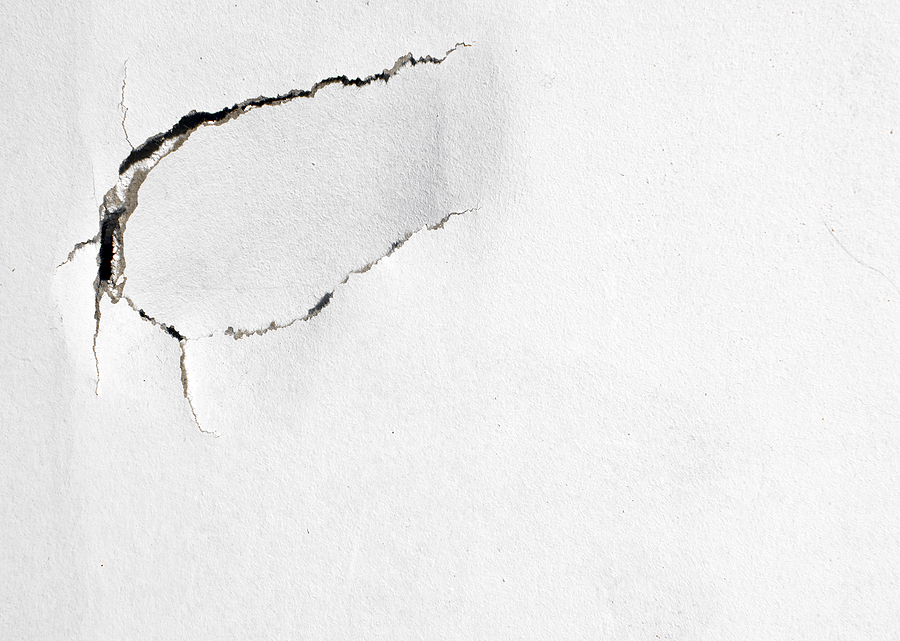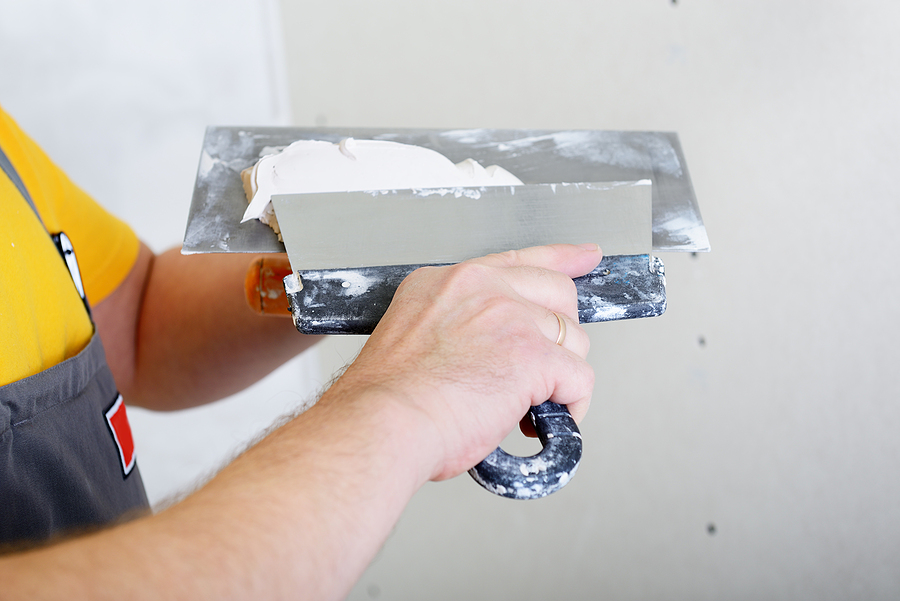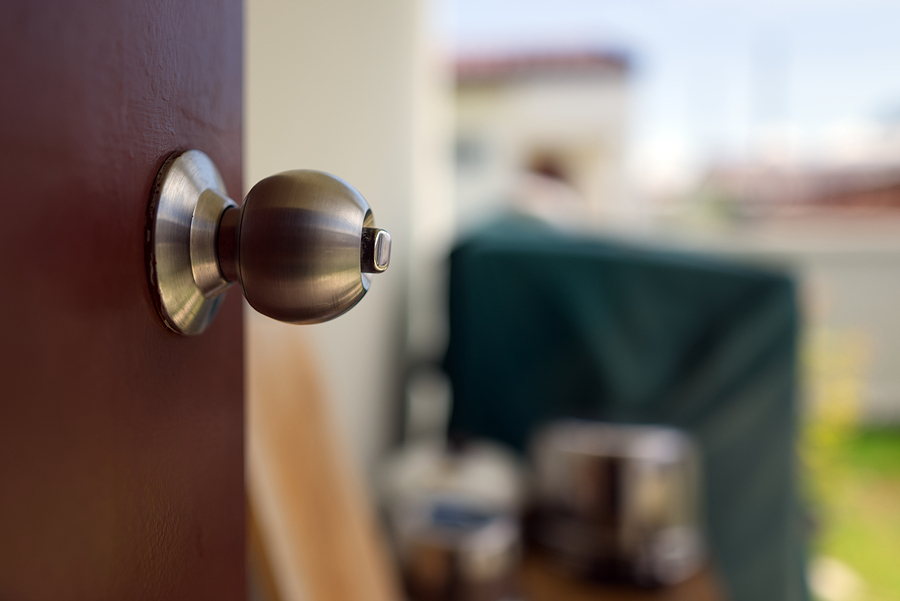Walls are more than just structural elements; they define the space, create a sense of security, and contribute to the aesthetic appeal of homes and offices. But what happens when these essential structures suffer damage? This is a concern every homeowner and office manager should address proactively. From minor scratches to significant water damage, walls can suffer from various types of wear and tear if not properly maintained. This blog provides practical insights into preventing wall damage in residential and commercial settings, offering valuable tips and solutions for maintaining the integrity of your walls.

The Silent Wear and Tear on Finished Walls
Daily activities, no matter how mundane, can cause gradual wear and tear on walls. Foot traffic, moving furniture, and even opening doors can lead to scrapes and dents. For homeowners, children playing indoors can be particularly tough on walls. In an office environment, frequent rearrangement of office equipment or furniture can lead to similar issues. Regularly assessing high-traffic areas can help identify potential problem spots before they escalate into significant damage.
While wear and tear might seem unavoidable, preventive measures can minimize the impact. Using corner guards and door stoppers is a simple yet effective way to protect high-risk areas from damage. Additionally, rearranging furniture thoughtfully to avoid direct contact with walls can significantly reduce the likelihood of scratches and dents.
Consistent maintenance routines are crucial in managing wear and tear. Regularly clean walls with appropriate cleaning solutions to remove dust and dirt buildup. This not only preserves the appearance but also prevents long-term deterioration. Maintenance efforts should focus on areas prone to daily contact and ensure they remain in good condition.
Preventing Moisture Damage in Drywall
Moisture is a formidable enemy to walls, leading to water damaged walls that can compromise structural integrity. This is often caused by leaks in plumbing, improper ventilation, or exposure to humid conditions. Mold growth and paint peeling are common indicators of moisture damage, requiring immediate attention.
To prevent moisture-related issues, ensure your home or office has adequate ventilation, especially in areas like kitchens and bathrooms. Regularly check for leaks in plumbing fixtures and address them promptly. Installing exhaust fans in high-moisture areas can also help maintain a dry environment.
Water-resistant paint and sealants are effective preventive measures against moisture damage. These products provide an additional layer of protection, keeping your walls safe from excessive moisture. Regular inspections and timely interventions are vital to preserving wall health and avoiding costly repairs.
Protection from Furniture and Equipment
Furniture and equipment can inadvertently cause impact damage to walls, resulting in unsightly wall dents or holes. This is especially common in offices where bulky furniture is moved frequently. Homeowners may also experience similar issues during renovations or when rearranging living spaces.
Preventing impact damage involves careful planning and strategic placement of furniture. Use felt pads under furniture legs to minimize friction and prevent scratches. In offices, encourage employees to use caution when moving office equipment to avoid accidental collisions with walls.
For added protection, consider installing wall guards or bumpers in high-risk areas. These products absorb impact and prevent direct contact between furniture and the wall surface. By taking preventive steps, you can maintain the pristine condition of your walls and avoid unnecessary repairs.
Identifying and Addressing Underlying Problems
Structural issues can manifest as wall cracks or bulges, often indicating deeper problems with the building’s foundation. These issues require immediate attention to prevent further damage and ensure the safety of occupants. Ignoring structural problems can lead to costly repairs and compromise the stability of the entire structure.
Conduct regular inspections of your property to identify any signs of structural damage. If you notice cracks in the walls or floors, consult a general contractor or structural engineer to assess the severity of the issue. Promptly addressing structural problems can prevent them from escalating into larger, more expensive repairs.
Reinforcing structural integrity may involve foundation repairs or other professional interventions. It’s important to rely on qualified professionals to address these issues adequately. Regular maintenance and early detection play a crucial role in preserving the long-term health of your property.
Wall Care Tips for Homeowners and Office Managers
Regular maintenance is essential to prevent wall damage and preserve the longevity of your walls. For homeowners, incorporate wall cleaning tips into your routine to keep surfaces free from dust and grime. Use gentle cleaning solutions to avoid damaging paint or wallpaper.
Office managers should implement a maintenance schedule that includes regular wall inspections and cleaning. Encourage employees to report any signs of damage immediately, allowing for prompt repairs. Establishing guidelines for wall care can promote a sense of responsibility among staff members.
Educate both homeowners and office occupants on the importance of maintaining wall integrity. Simple actions, such as using protective materials and handling furniture carefully, can go a long way in preserving the condition of walls. Consistent maintenance efforts can save time, money, and frustration in the long run.
Choosing the Right Wall Protection Products
Investing in wall protection products is a proactive step in preventing damage. Consider using corner guards, wall bumpers, and chair rails in high-traffic areas to protect vulnerable spots. These products are available in various materials and styles to suit different aesthetic preferences.
In an office environment, consider installing kick plates on doors to prevent scuff marks. These small additions can significantly extend the lifespan of walls and maintain a professional appearance. By choosing the right wall protection products, you can enhance both functionality and aesthetics.
Explore different options for wall protection to find the best fit for your needs. Whether it’s adding a decorative wainscoting or using clear protective films, there’s a solution for every space. Investing in these products can prevent costly repairs and maintain the pristine condition of your walls.
Implementing Wall Care Policies in the Workplace
Creating a culture of wall care in the workplace involves establishing clear policies and guidelines. Encourage employees to handle office equipment with care and be mindful of their surroundings. Regular training sessions can reinforce the importance of maintaining wall integrity.
Designate specific individuals or teams responsible for monitoring wall conditions and reporting any issues. This ensures that any damage is addressed promptly and doesn’t go unnoticed. By involving employees in wall care efforts, you can foster a sense of ownership and accountability.
Regularly communicate the importance of wall maintenance to all staff members. Remind them that preserving the appearance of the office contributes to a positive work environment. Implementing wall care policies can prevent damage and create a more pleasant workplace for everyone.
Financial Implications of Neglecting Wall Maintenance
Neglecting wall maintenance can lead to significant financial implications. Small issues, such as minor wall dents or cracks, can quickly escalate into costly repairs if left unattended. The cost of repairing extensive damage far outweighs the investment in regular maintenance.
In addition to repair costs, neglecting wall maintenance can impact the overall value of a property. Aesthetically unappealing walls can deter potential buyers or tenants, reducing the property’s marketability. Maintaining well-kept walls is essential for preserving property value.
Consider the long-term financial benefits of proactive wall maintenance. By investing in regular inspections and preventive measures, you can avoid expensive repairs and protect your property’s overall value. Prioritizing wall care is a wise investment in the longevity of your space.
Health and Safety Concerns with Damaged Walls
Damaged walls pose health and safety risks to occupants. Crumbling walls or structural issues can compromise the integrity of a building, potentially leading to accidents or injuries. Ensuring the safety of occupants should always be a top priority.
Addressing health and safety concerns involves promptly repairing any visible damage and addressing underlying structural issues. Regular inspections can help identify potential hazards and allow for timely interventions. Prioritizing safety ensures a secure environment for residents and employees.
Consider the impact of neglected walls on indoor air quality. Damaged walls may harbor mold or mildew, which can negatively affect the health of occupants. Maintaining walls in good condition contributes to a healthier living and working environment.
Step-by-Step Guide to Repairing a Hole in the Wall
Repairing a hole in the wall is a manageable task for homeowners and office managers. Gather the necessary tools and supplies, such as a patch kit, sandpaper, joint compound, putty knife, and paint. Having these items on hand ensures a smooth repair process.
Begin by cleaning the area around the hole and removing any loose debris. Apply the patch over the hole, ensuring it adheres securely. Use a putty knife to apply joint compound over the patch, feathering the edges for a seamless finish.
Once the compound is dry, sand the surface until smooth and paint over it to match the surrounding wall. This step-by-step process ensures a professional-looking repair and helps restore the appearance of your walls.
When to Call a Professional for Drywall Repair
While minor repairs can be tackled independently, certain situations require professional expertise. Extensive damage, such as large holes or structural issues, may necessitate the skills of a qualified drywall repair service. Professionals can assess the damage and recommend appropriate solutions.
Consulting a professional is advisable when dealing with moisture damage or complex repairs. These issues often require specialized equipment and techniques to address effectively. By relying on experts, you can ensure the longevity of your walls and avoid further complications.
Consider the value of professional assistance in maintaining wall integrity. A skilled technician can provide valuable insights and recommendations for preventing future damage. Partnering with professionals enhances the overall quality of your wall care efforts.
Conclusion
Protecting and maintaining your walls is essential for preserving the beauty and functionality of your home or office. By implementing preventive measures, conducting regular maintenance, and addressing repairs promptly, you can avoid costly damages and create a safe, inviting environment for all.
Take the time to assess your current wall care practices and make necessary changes to enhance their longevity. Whether you’re a homeowner or office manager, prioritizing wall maintenance is an investment in the value and safety of your space.
For further resources and expert advice on wall care, consider consulting professionals who specialize in wall maintenance and repair. Their expertise can help you take proactive steps to protect your walls and enhance the overall quality of your living or working environment.
Are you looking for some professional help with drywall work? Contact Drywall by Renso at 317-269-7319 for professional drywall repair in Indianapolis, Indiana. Your satisfaction is our top priority, and we’re here to help you maintain a beautiful and functional space. Request a free estimate, today!
Related Posts:
Avoid DIY Disasters: The Importance of Professional Drywall Installation
Tips for Avoiding DIY Drywall Mistakes
Fundamental Information About Installing Water-Proof Drywall


